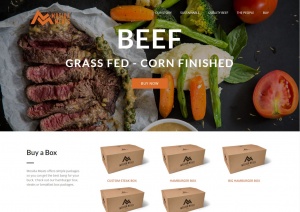The Future of Pay-Per-Click Advertising: Highly Targeted Ads
 Old school pay-per-click analysts remember a time when you could simply pay off Google to rank for keywords that you couldn’t attain in the organic search results. It was such a simple concept: Pay Google for every Click they produce to your website. It was easy to get the placement you wanted; and, best of all, most of Google’s users didn’t know when they were clicking on an ad, as all results appeared to be the same. Slowly, Google started adding visuals to tip off users to the fact that their ad slots were in fact advertisements. As of this year, Google has implemented a small yellow square that indicates “Ad.”
Old school pay-per-click analysts remember a time when you could simply pay off Google to rank for keywords that you couldn’t attain in the organic search results. It was such a simple concept: Pay Google for every Click they produce to your website. It was easy to get the placement you wanted; and, best of all, most of Google’s users didn’t know when they were clicking on an ad, as all results appeared to be the same. Slowly, Google started adding visuals to tip off users to the fact that their ad slots were in fact advertisements. As of this year, Google has implemented a small yellow square that indicates “Ad.”
As pay-per-click ads become more visible, more expensive, and more ignored by the users, many businesses are showing smaller profit margins from generic AdWords, and they're starting to taking aim at their customers in different ways. That’s not to say that pay-per-click is disappearing. It’s just that in order to get your money’s worth out of PPC ads, you have to have a highly targeted audience of qualified leads. Fortunately, this data is available and ready to be used. Additionally, technology has allowed us to get closer to our audiences than ever before. The new tools allow you to literally find your future consumers, and personalize a direct message.
Seven years ago in the PPC world, we had to qualify a consumer based on the keyword that they were searching. For instance, we’re a web development agency so we would’ve wanted to target the keyword: “Custom Website Development.” Five years ago, that term brought us all kinds of leads (good and bad); but, for the price we paid per lead, it was a very efficient form of advertising. In today’s market, the same number of leads for the same search phrase costs a significantly larger amount of money. This is because there are more agencies and SMBs using AdWords and more competition means higher prices; that’s economics 101. So, instead of continuing what worked 5 years ago, we’ve changed up our marketing system. Now, in addition to AdWords, we also do contextual advertising, video advertising, display advertising, product advertising and more. That’s because we can now target users based on age, geography, clothing brands and even relationship status.
A married user in their fifties, living in Park City, Utah, who wears clothes made by Ralph Lauren, is a great target for a high-end couples spa advertisement. On the contrary, a single user in their twenties, living in St. George, Utah, who wears clothes from Old Navy, is not a good target for the same ad, even though they both may search for "Relaxing Activity Utah." So, we look at our demographic, we hit those consumers with what they want to see (maybe a specific product or service), and we show it to them where they want to see it (maybe social media) and how they want to see it (maybe video). When we do use AdWords, we load our campaigns with extensions. If we are targeting people in our general area, our ads will have a location extension so they can see where we are. If we want the phone to ring, we will increase spend on mobile ads and enhance them with call extensions. The goal here is to make the most out of a budget. Spend your money on qualified leads that will convert by finding out who they are and how they would like to be spoken to. With so much data at our fingertips, we certainly don’t want to waste time with old school PPC. Find your team of experts and get started today!
INSERTED 10/01/14:
Luna Will Be Hosting a Google Sponsored Event! Stay Tuned for more information!



 Add to Favorites
Add to Favorites

